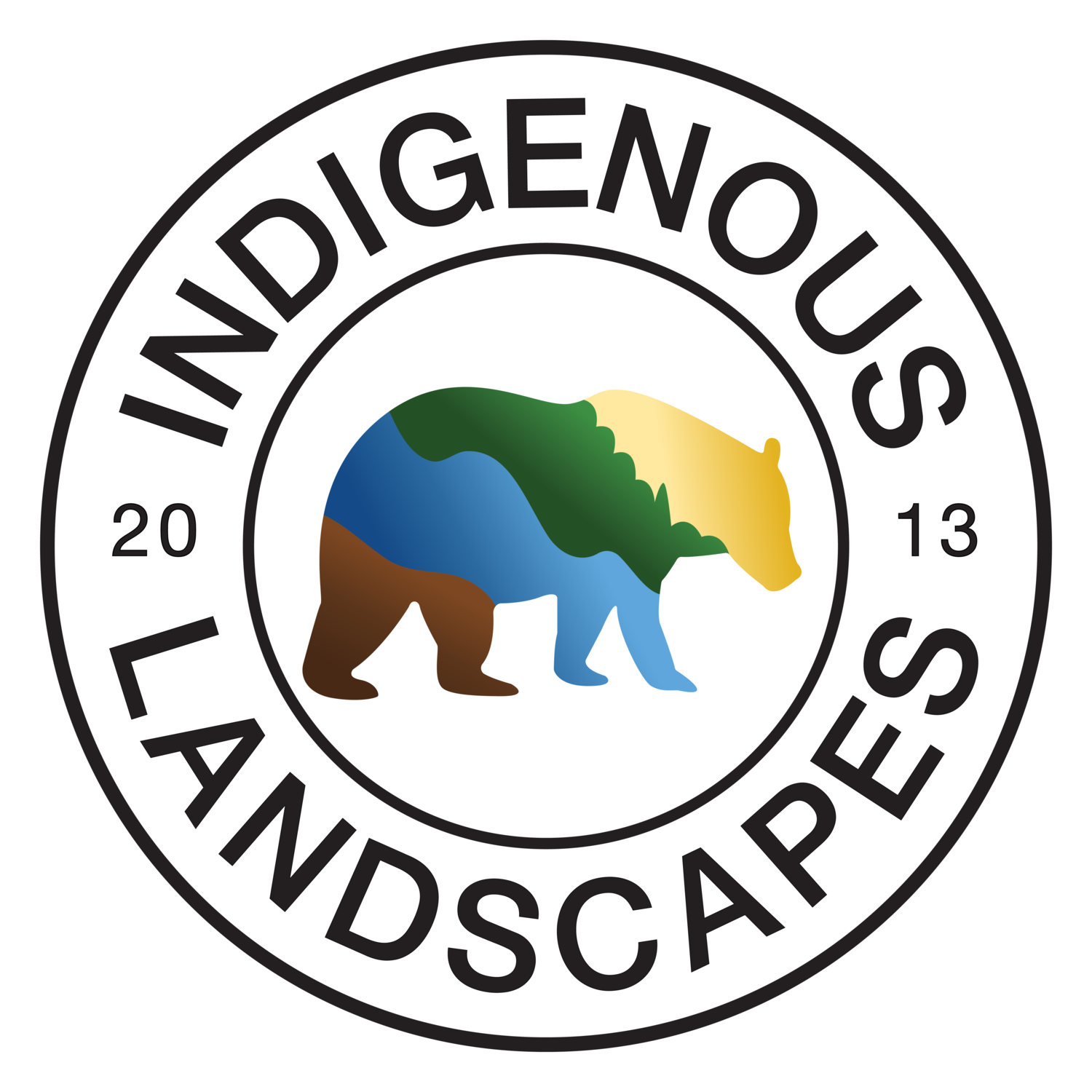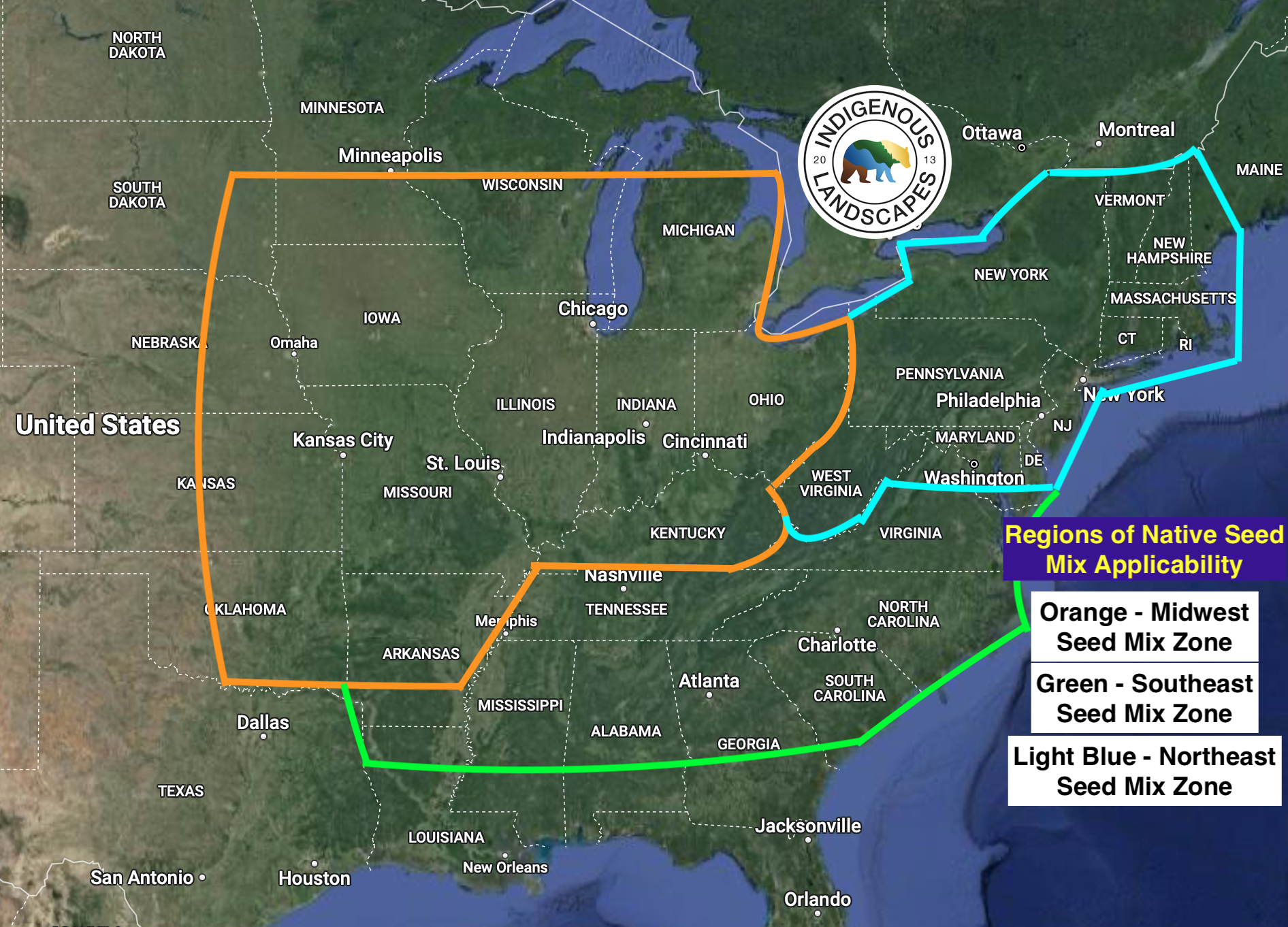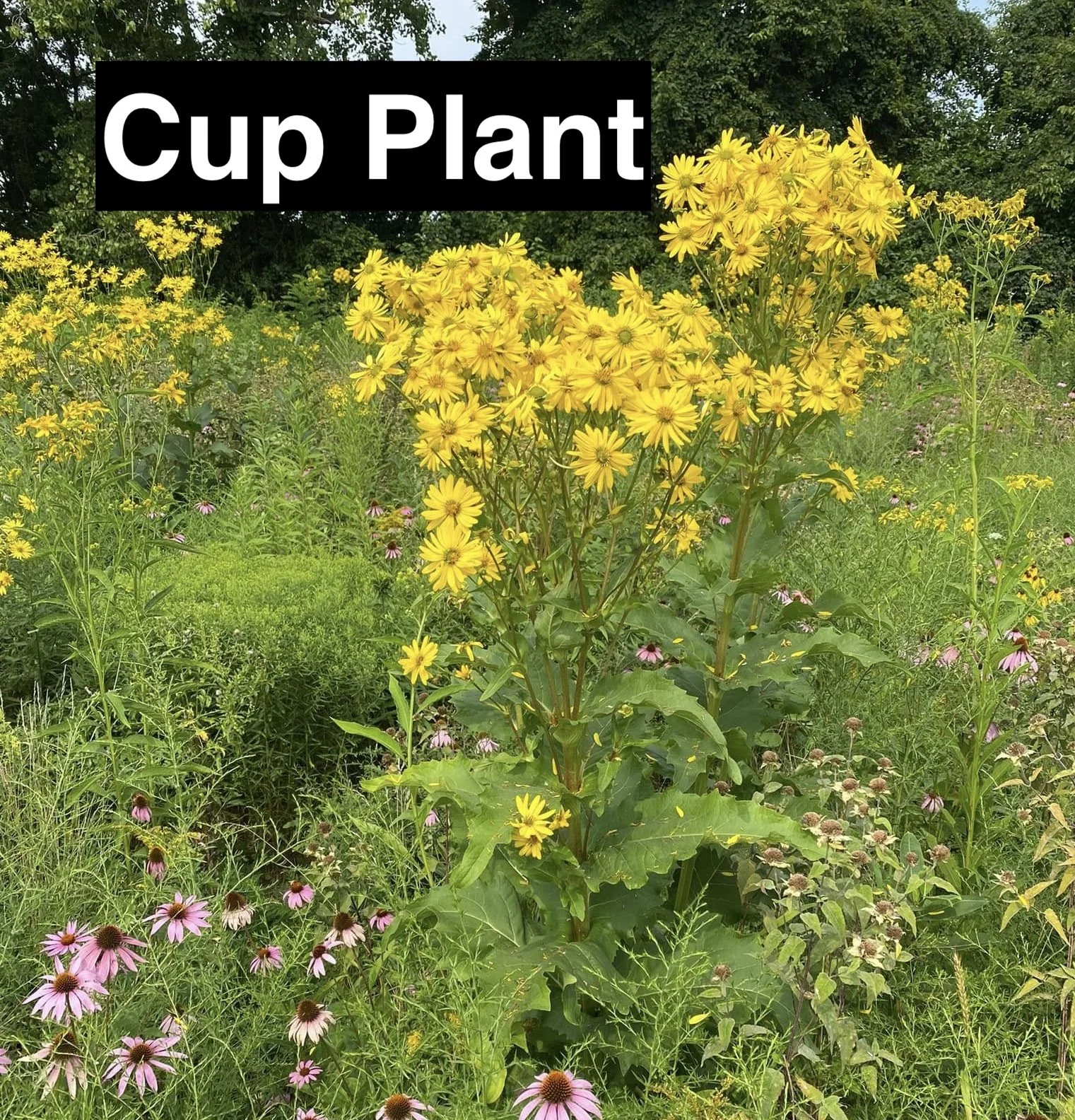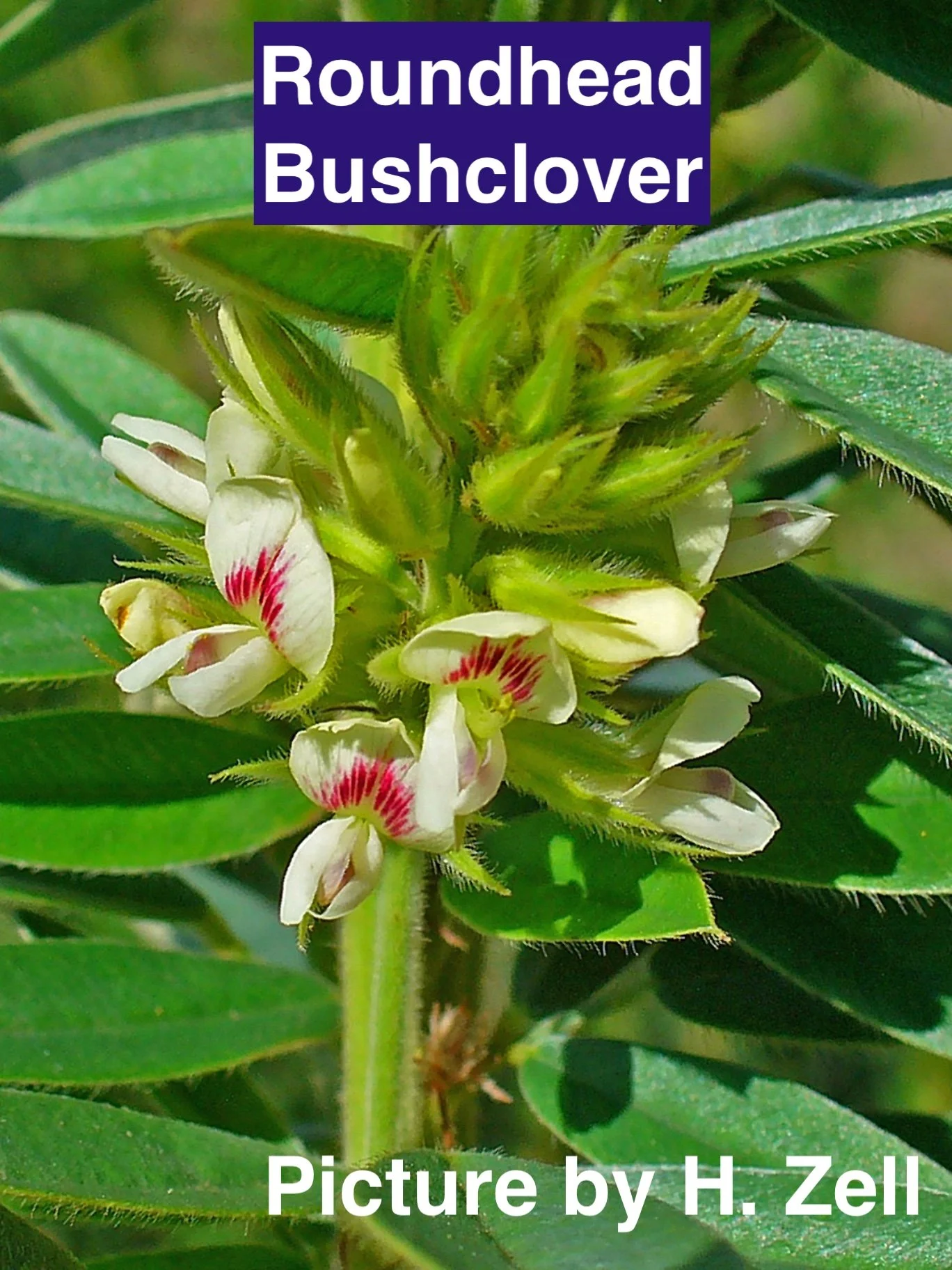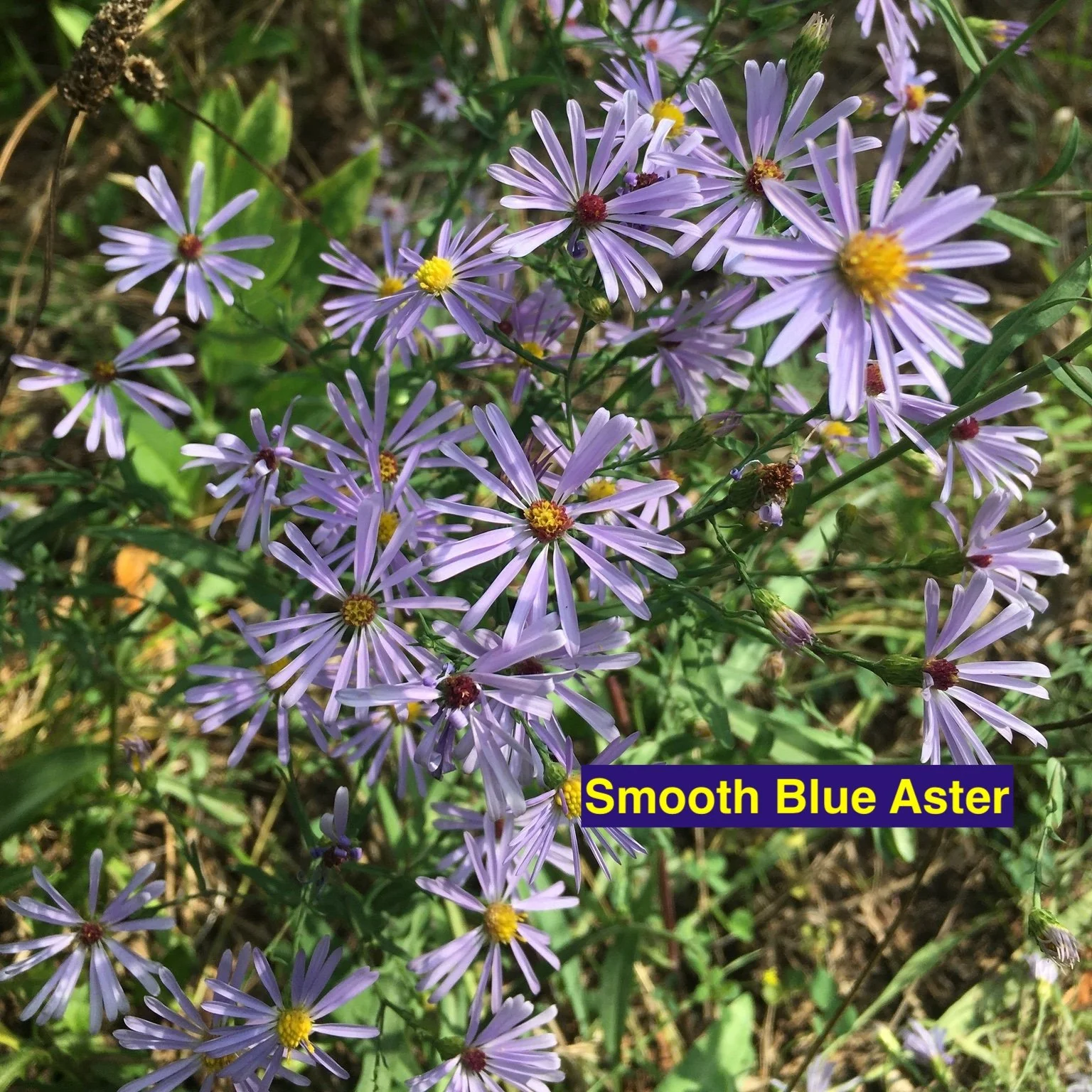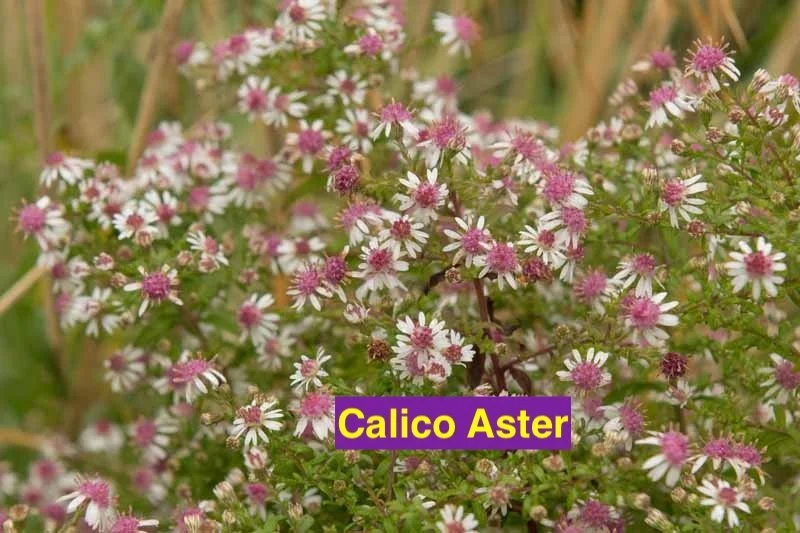Midwestern 50 species Native Seed Mix
Midwestern 50 species Native Seed Mix
This seed mix contains 50 species of native wildflowers and grasses/sedges. Wildflowers make up 95% of the seed mix while the 5 species of grasses/sedges make up 5% of the seed mix. This design is to ensure long wildflower diversity long-term as native grasses and sedges can become over dominant over time when designed at higher seed proportions due to the lack of Bison and/or Elk grazing the Native Meadows/Prairies. The height is mixed with most plants remaining under 3.5 feet tall, and a minority of plants reaching higher than 3.5 feet tall. All of our seed mixes are 80 seeds per square foot. This Midwestern Seed Mix will bloom from May into October with a high diversity of native wildflowers.
These native species are native to most of the Midwest as defined on the Pictured Map. This diversity is designed to be able to successfully establish native meadows/prairies on wet soils, seasonally wet soils, moderate/average moisture soils, and drier soils in sun exposures of 4 direct sunlight hours to a full day’s worth of sun.
Not all 50 species are pictured, but all 50 species of this seed mix are listed below.
Spring into Early Summer Blooming Species
Golden Alexanders Zizia aurea, Ohio Spiderwort - Tradescantia ohiensis, Blue Wild Indigo (Baptisia australis), White Wild Indigo (Baptisia alba), Lanceleaf Coreopsis Coreopsis lanceolata, Foxglove Beardtongue Penstemon digitalis, Blackeyed Susan Rudbeckia hirta, Butterfly Milkweed Asclepias tuberosa, Common Milkweed Asclepias syriaca, Achillea millefolium Yarrow, Blephilia cillata Downy Wood Mint, Thimbleweed Anemone virginiana
Midsummer Blooming Species
Wild Bergamot Monarda fistulosa, Pycnanthemum virginianum Virginia Mountain Mint, Grey Headed Coneflower Ratibida pinnata, Purple Coneflower Echinacea purpurea, Oxeye Sunflower Heliopsis helianthoides, Culver's Root Veronicastrum virginicum, Maryland Senna Senna marilandica, Marsh Blazing Star Liatris spicata, Early Goldenrod Solidago juncea, Spotted Bee Balm Monarda punctata, Dalea purpurea Purple Praire Clover, Astragalus canadensis Canada Milk Vetch, Desmodium canadense Showy Trefoil, Eryngium yuccifolium Rattlesnake Master, Cup Plant Silphium perfoliatum - limited amount to maintain species balance.
Late Summer Blooming Species
Silphium terebinthinaceum Prairie Dock, Partridge Pea Chamaecrista fasciculata, Hollow-stem Joe Pyeweed Eutrochium fistulosum, Orange Coneflower Rudbeckia fulgida, Tall Coreopsis Coreopsis tripteris, Giant Ironweed Vernonia gigantea, Slender Bush Clover - Lespedeza virginica, Rounded Headed Bush Clover Lespedeza capitata, Grassleaf goldenrod Euthamia gramnifolia
Early Fall Blooming Species
Stiff Goldenrod Solidago rigida, Dwarf Goldenrod Solidago nemoralis, Showy Goldenrod Solidago speciosa, Showy Bidens Bidens aristosa, New England Aster Symphyotrichum novae-angliae, Frost Aster Aster pilosus, Aromatic Aster Aster oblongifolius, Arrowleaf Aster Aster sagittifolius, Aster lateriflorus Calico Aster, Smooth Blue Aster - Aster laevis
Sedge and Grasses (Less than 5% of the total seeds)
Fox Sedge Carex vulpinoidea, Little Bluestem Schizachyrium scoparium, Indiangrass Sorghastrum nutans, Purple Top Tridens Flavus
1,000 and 2,000 square foot portions are available for smaller spaces.
The 1/8th acre seed mix is great for starting large pollinator gardens (300 square feet or more) and for starting mini-native meadows up to 5,445 Square feet. When using this mix specifically for pollinator gardens, use only 1/4th of your seed mix per pollinator garden to compensate for the smaller spaces. This size is about 3.4 cents per square foot in price.
The 1/4th acre seed mix is great for starting numerous large pollinator gardens (up to 20 separate 500 square feet pollinator gardens) and for starting native meadows/prairies up to 10,890 Square feet. You could also start 3 Native meadows around 3,400 square feet each, or 2 Native Meadows around 5,450 square feet. This size is about 2.7 cents per square foot in price.
The 1/2th acre seed mix is ideal for providing a stronger impact on local pollinators due to the size - covering up to 21,780 square feet. You could divide this up into 3 or 4 smaller native meadows by dividing 21,780 square feet by 3 or 4 to get a square footage measurement for the smaller native meadows/prairies. This size is about 2.4 cents per square foot in price.
We also have a 1 acre size available for more bulk cost savings at $870 - 2 cents per square foot.
What Makes Our Native Seed Mixes Different From Competitors.
The biggest difference in our seed mixes is the amount of native wildflower species being 41 to 46 species in our high diversity seed mixes, and the percentage of Native Wildflower seed vs. Native Grass seed being 95% to 5%. For this amount of wildflower species, and this heavy of native wildflower to native grass percentage; no other native seed company can beat our pricing. As nearly all native seed companies offer; we also provide an instruction manual and customer service question answering via email as you work on transforming your land back into native meadow vegetation. This instruction manual can be followed by yourself or a hired landscaper if the job feels overwhelming to you.
Cost Effectiveness
Native Prairie/Meadow Seedings cost about 2 to 5 cents per square foot where as using potted native plants to cover the same area costs $2.00 to $8.00 per square depending on how densely they are installed and mulch use. For example, a 1,000 Square foot pollinator garden would require at least 750 potted native wildflowers/grasses to cover the plot. Potted Plants can cost $2 to $10 per plant, and at a cost of $5.00 per plant, 750 wildflowers/grasses would cost $3,750 + installation costs and mulching costs. If that 1,000 square feet were instead seeded with one of our mixes it would cost $125 - $150, and you could do the installation yourself simply, using our instruction manual. The cost effectiveness ratio increases even higher the larger of plot you are seeding vs. planting with plugs or potted plants. The biggest difference in our seed mixes compared to other company’s is the amount of native wildflower species and grass seed ratio. Our high diversity seed mixes have 40 to 46 species and the percentage of Wildflower seed vs. Grass/Sedge seed is 95% to 5%. Most companies use portions of 20% to 60% grass/sedge leading to grass/sedge dominated plantings that squeeze out the wildflowers overtime. Those companies also make a larger profit because grass and sedge seeds are cheaper than wildflower seeds. For this amount of species, and as heavy of native wildflower to native grass/sedge percentage; no other native seed company is currently beating our pricing.
